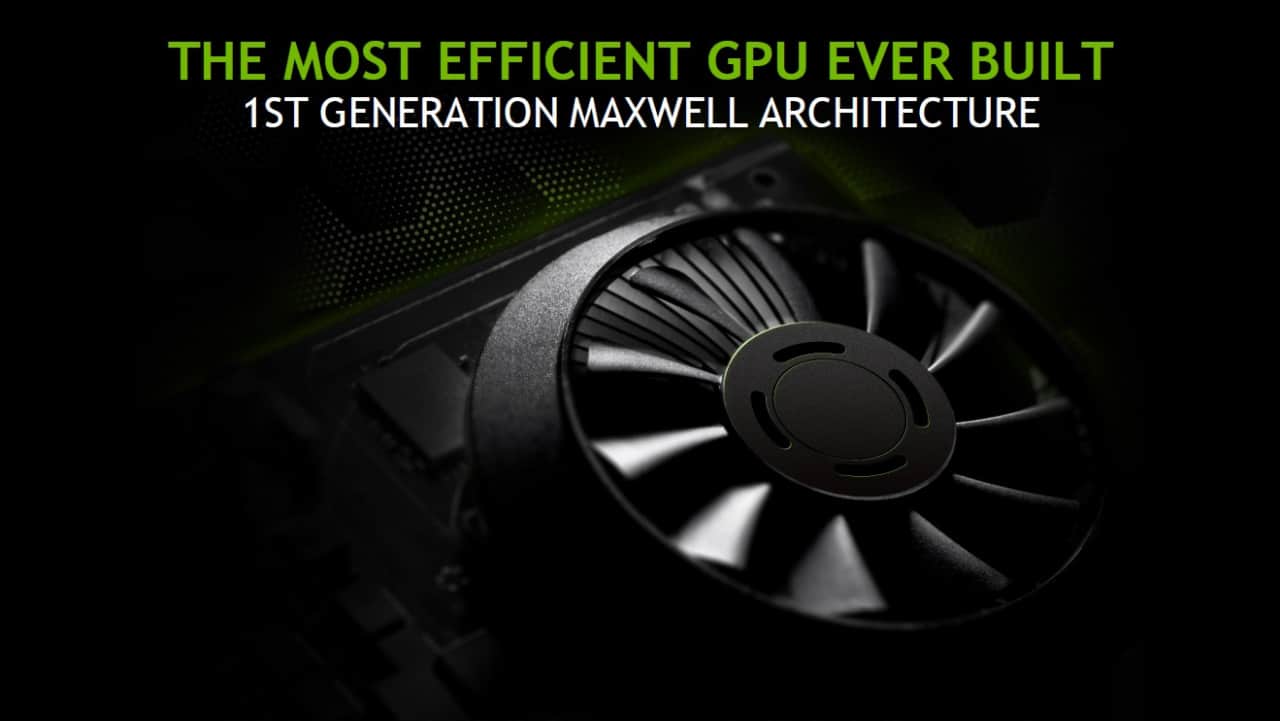Today, Nvidia launches the mid-range cards Geforce GTX 750 Ti and GTX 750, where the big news is improved energy efficiency compared to previous solutions in the class. This is not achieved through a transition to a new manufacturing technology but the completely new architecture Maxwell. First out is the GM107 graphics processor with several changes compared to the Kepler architecture.
First of all, the SMX clusters with 196 CUDA cores are replaced by SMM clusters with 128 CUDA cores divided into four segments. This provides more efficient use of the kernels, but also the possibility of more fine-grained clock-gating, which means that the four parts of an SMM cluster can be turned off individually to save power.
Another new feature in GM107 is that the size of the L2 cache has increased to 2,048 KB, up from 256 KB in its predecessor GK107. The larger memory means that fewer requests can be made to the graphics card’s graphics memory, which reduces the total power consumption and at the same time provides increased performance.
The changes result in mainly three improvements to the previous generation’s Kepler architecture. Energy efficiency is said to be twofold and performance per core increases by 35 percent. The new SMM clusters also take up less space, which means that Nvidia has been able to push five into the GM107 graphics circuit, which is only 25 percent larger than the GK107 with two SMX clusters.
► Read SweClockers quick look at the Geforce GTX 750 Ti and Radeon R7 265
Maxwell also introduces faster H.264 decoding and decoding with built-in NVENC, which is used for, among other things, the company’s recording finesse Shadowplay. Finally, a new power save mode called CG5 is displayed, which is used in low load scenarios, such as video playback.
Specifications: GTX 750 and GTX 750 Ti
GTX 750 | GTX 750 Ti | GTX 650 Ti | GTX 660 | |
|---|---|---|---|---|
Technical | 28 nm | 28 nm | 28 nm | 28 nm |
Circuit | GM107 | GM107 | GK106 | GK106 |
Architecture | Maxwell | Maxwell | Kepler | Kepler |
CUDA cores | 512 st. | 640 st. | 768 st. | 960 st. |
Texture units | 64 st. | 80 st. | 64 st. | 80 st. |
Raster units | 16 st. | 16 st. | 16 st. | 24 st. |
Clock frequency | 1 020 MHz | 1 020 MHz | 925 MHz | 980 MHz |
GPU Boost | 1 085 MHz | 1 085 MHz | – | 1 033 MHz |
Memory bus | 128-bit | 128-bit | 128-bit | 128-bit |
Memory amount | 1 GB GDDR5 | 1/2 GB GDDR5 | 1 GB GDDR5 | 2 GB GDDR5 |
Memory frequency | 5 000 MHz | 5 400 MHz | 5 400 MHz | 6 000 MHz |
Memory bandwidth | 80 GB/s | 86,4 GB/s | 86,4 GB/s | 144 GB/s |
Power supply | – | – | 6-pin | 6-pin |
Outputs | 2 st. DVI | 2 st. DVI | 2 st. DVI | 2 st. DVI |
TDP | 55 W | 60 W | 110 W | 140 W |
The results of the new architecture and graphics circuit GM107 are Geforce GTX 750 and GTX 750 Ti, where Nvidia hits the big drum for energy efficiency. With TDP values nailed to 55 and 60 watts, respectively, the graphics cards can do without a 6-pin PCI Express connection and should still be sufficient to power around the latest games in the resolution 1,920 x 1,080 pixels.
The Geforce GTX 750 Ti comes with five SMM clusters for a total of 640 CUDA cores, while the sibling GTX 750 has one cluster disabled and 512 CUDA cores. It includes a 128-bit memory bus with GDDR5 memory clocked at 5,400 MHz and 5,000 MHz in the standard version.
Nvidia gives manufacturing partners free rein to develop their own variants from day one, something practically all of them have done. This means that most graphics cards come with custom coolers, circuit boards and factory overclocking. Most have also chosen to supplement the newcomers with a 6-pin connection to provide more stable power supply in case of overclocking.
Finally, the newcomers are placed between the Geforce GTX 660 and GTX 650, resulting in the following product portfolio of graphics cards from Nvidia in the Geforce series: GTX Titan Black, GTX 780 Ti, GTX 780, GTX 770, GTX 760, GTX 660, GTX 750 Ti, GTX 750 and finally GTX 650.
Nvidia Geforce GTX 750 1 GB and GTX 750 Ti 2 GB have recommended price tags of SEK 1,029 and SEK 1,299, respectively. Soon, the GTX 750 Ti 1 GB will also be available with an estimated price of around SEK 1,199. The graphics cards are available at Swedish retailers today for immediate delivery to the end customer.















